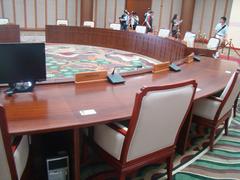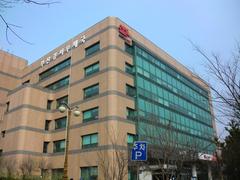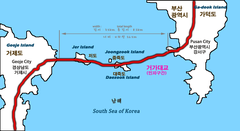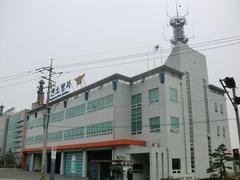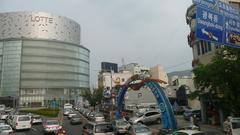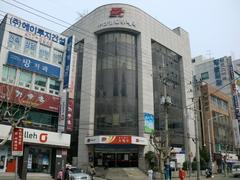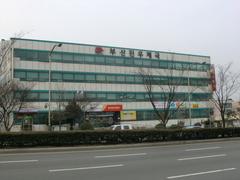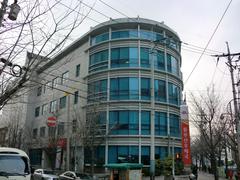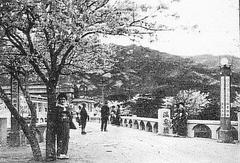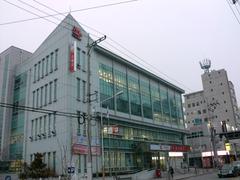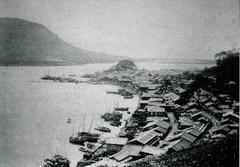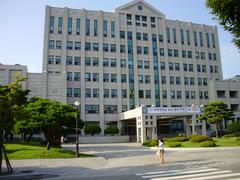Jangnim Station Visiting Hours, Tickets, and Travel Guide: Exploring Busan’s Historical and Waterfront Treasures
Date: 04/07/2025
Introduction to Jangnim Station: History and Visitor Significance
Jangnim Station, nestled in the southwestern Saha-gu district of Busan, South Korea, stands as a vital hub of connectivity and a gateway to the city’s rich historical and cultural landscape. As a prominent stop on Busan Metro Line 1, Jangnim Station offers travelers seamless transit options, accessibility features, and immediate proximity to waterfront attractions like the renowned Jangnim Port—popularly called “Bunezia” thanks to its Venice-inspired canals and vibrant ambiance (Busan Metropolitan City). This guide provides detailed information on station hours, ticketing, accessibility, local attractions, and practical travel tips to ensure a rewarding visit to this pivotal district in Busan.
Table of Contents
- Introduction to Jangnim Station
- Historical Overview: Jangnim and Southwestern Busan
- Jangnim Station: Operations, Facilities, and Accessibility
- Exploring the Local Area
- Practical Travel Tips
- Suggested Itineraries
- Frequently Asked Questions (FAQ)
- Summary and Final Recommendations
- References
1. Historical Overview: Jangnim and Southwestern Busan
Prehistoric and Ancient Roots
The Saha District, home to Jangnim, boasts a settlement history spanning thousands of years. Archaeological discoveries in greater Busan include Neolithic, Bronze Age, and Paleolithic sites, revealing the region’s longstanding importance as a nexus for early Korean civilizations. The nearby Nakdong River fostered the rise of the Geumgwan Gaya confederacy, famed for its iron production and trade (Busan Metropolitan City).
Dynastic Periods and Port Development
By the first century CE, the area was absorbed by the Silla kingdom, later reorganized during Goryeo and Joseon into administrative units reflecting its strategic significance. The establishment of Busanpo Port and the Japanese Waegwan trading post cemented Busan’s—and by extension, Jangnim’s—role as a diplomatic and commercial gateway (Busan Metropolitan City).
Modernization, Industrialization, and Postwar Growth
Busan’s transformation accelerated in the late 19th and early 20th centuries with the opening of its international port, the construction of railway lines, and waves of industrialization, especially under Japanese colonial rule (Then and Nows). The city’s population ballooned during the Korean War as refugees flocked to Busan, leading to rapid urban expansion in districts like Saha and Jangnim. Subsequent decades saw continued industrial growth, urban renewal, and the development of modern transportation infrastructure (Busan Metropolitan City, KoreaToDo).
2. Jangnim Station: Operations, Facilities, and Accessibility
Layout and Design
Jangnim Station on Metro Line 1 features a standard underground layout with two platforms and two tracks, designed for efficient passenger flow. Signage is clear and bilingual (Korean and English), with tactile paving and staff assistance available for travelers requiring support (Wikipedia).
Visiting Hours and Ticketing
- Operating Hours: Daily from approximately 5:00 AM to midnight. First and last train times may vary by direction; consult station signage or the Busan Metro website for real-time schedules (Busan Metro Info).
- Ticketing: Automated machines accept cash and cards for single-ride tickets. Rechargeable T-money and Cashbee cards are recommended for convenience and fare discounts across metro and bus lines (Korea Travel Planning).
Accessibility and Convenience
The station is fully accessible, featuring elevators, escalators, tactile paving, and priority seating. Multilingual signage (Korean, English, Japanese, Chinese) aids navigation. Restrooms, convenience stores, and free Wi-Fi are available on site (Busan Metro Info).
3. Exploring the Local Area
Jangnim Port (“Bunezia”)
A short walk from Jangnim Station, Jangnim Port charms visitors with its colorful canal-side buildings, lively seafood markets, and the unique atmosphere reminiscent of Venice’s Murano Island. This area is open year-round and free to enter, with peak activity from morning through sunset (VisitKorea).
- Hours: Most shops and eateries operate from 10:00 AM to 8:00 PM, with some open later.
- Events: Seasonal festivals and cultural events are common in summer; check Saha-gu’s official website for updates.
Key Nearby Attractions
- Dadaepo Beach: Famous for its wide sands, sunsets, and the Dadaepo Sunset Fountain of Dreams show (Trazy Blog).
- Eulsukdo Island: A renowned bird sanctuary and ecological park, accessible via local bus or taxi (Korea Travel Planning).
- Amisan Observatory: Offers panoramic views of the Nakdong River estuary and Jangnim Port.
Dining, Markets, and Amenities
Local seafood restaurants serve fresh catches daily, and numerous cafes offer snacks and drinks. Street food stalls and traditional markets provide affordable, authentic Korean cuisine. Convenience stores and ATMs are located near the station.
4. Practical Travel Tips
Transportation and Tickets
- Getting There: Take Metro Line 1 to Jangnim Station. From Busan Station, the trip takes about 45–50 minutes (GoTravelTipster).
- Public Transport Passes: Rechargeable T-money cards are widely accepted on buses, subways, and some taxis.
- Navigation: Use apps like KakaoMap or Naver Map for real-time transit directions.
Language, Safety, Weather, and Luggage
- Language: English signage is prevalent; translation apps like Papago can help in smaller establishments.
- Safety: Busan is very safe, with regular patrols and CCTV.
- Weather: Summers are warm (25–30°C), winters mild but windy. Bring appropriate attire and sun/rain protection (Wanderlog).
- Luggage: No lockers at Jangnim Station; use facilities at larger hubs like Busan Station or Seomyeon.
Etiquette and Local Customs
- Queue for trains, allow passengers to exit before boarding, and keep noise levels low.
- Dispose of trash properly; smoking is prohibited in most public areas.
- Priority seating is reserved for elderly, pregnant, or disabled passengers.
5. Suggested Itineraries
- Half-Day Nature Excursion: Start at Jangnim Station, visit Eulsukdo Island, and end at Dadaepo Beach for sunset.
- Cultural Walk: Explore Jangnim Port’s canals, markets, and nearby Amisan Observatory for panoramic views.
- Local Market Tour: Sample street food and fresh seafood at nearby markets before continuing your journey.
6. Frequently Asked Questions (FAQ)
Q: What are Jangnim Station’s operating hours?
A: From around 5:00 AM to midnight daily; check Busan Metro Info for exact times.
Q: Do I need a ticket for Jangnim Port?
A: No, entry is free. Fees may apply only for special events or tours (VisitKorea).
Q: Is Jangnim Station wheelchair accessible?
A: Yes, with elevators, ramps, and tactile paving.
Q: What attractions are nearby?
A: Jangnim Port (Bunezia), Dadaepo Beach, Eulsukdo Island, Amisan Observatory.
Q: Are there guided tours?
A: Yes, local operators and the Saha-gu district offer seasonal walking and cultural tours (Saha-gu official website).
7. Summary and Final Recommendations
Jangnim Station stands at the crossroads of Busan’s history, culture, and modern life. With efficient transit, accessible facilities, and immediate access to unique attractions like Jangnim Port and Dadaepo Beach, it provides an ideal starting point for both casual sightseeing and deeper exploration of Busan’s southwestern charm. Leverage digital resources like the Audiala app for real-time travel updates, join local tours, and take time to experience the vibrant markets and stunning waterfronts that make this area so memorable.
8. References (official sources and further reading)
- Busan Metropolitan City
- Then and Nows
- KoreaToDo
- Namu Wiki
- VisitKorea
- RealK
- Busan Major Events 2025
- Wanderlog
- Goblin Korea
- GoTravelTipster
- Cities Insider
- Trazy Blog
- Korea Travel Planning
- Wikipedia - Jangnim Station
For up-to-date travel information, maps, and exclusive guides, download the Audiala app and follow our official channels. Happy travels in Busan!

